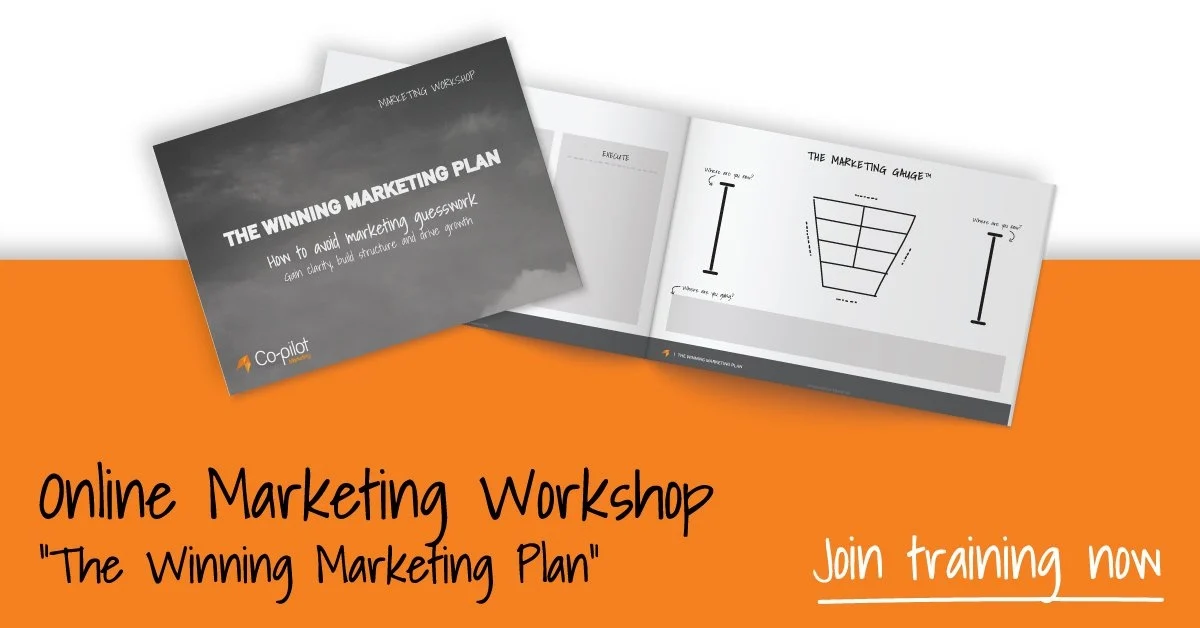
As always, the marketplace is full of of predictions surrounding the marketing solutions that will dominate this year, so I wanted to look at some of the problems, needs and objectives facing businesses this year and what marketing solutions can help solve them.
1. You work in a high volume, low margin industry selling a commodity product with little to no exclusivity.
This is always a tough gig as you tend to find that only a small number of marketing solutions you come across are actually viable for you. You certainly don't want to place a significant focus on nurturing a prospect through their awareness and consideration stages of the buyers journey as they will likely still shop you around for a cheaper price. You need to find marketing solutions that don't focus on price, but develop feasible exit barriers so you get a return on your cost of customer acquisition.
The reality for you is that it is not the product you are selling, but the total experience. Reliable delivery, effective account management, painless returns processes, user friendly invoicing etc. These all play to the perceived risk to their business if they stop using you as their supplier.
Additionally, great success can be achieved through loyalty programs.
To get results from a loyalty program, you have to nail the program design. You have to make it attractive for people to want to participate, both in the return they get and the simplicity to be involved. So, don't put the responsibility on the customer to log their sales and don't make the reward tiers confusing and complicated. Instead, find the behaviours you want to reward and entice them fully. Bonuses for referrals, length of relationship and early credit account settlement are all excellent ways of doing so. Additionally, don't be afraid to punish the wrong behaviour. If you are in an industry where customers use multiple suppliers and play the credit game, restrict redemptions for overdue accounts, cancel points for a period of inactivity and anything else that is fair. Remember, you are developing a loyalty program not a charity.
Also, restrict the urge to offer gift cards as rewards. They are a simple and attractive solution, but in my experience, they get rationalised as a rebate. Instead, offer attractive consumer products, charitable donations and holidays. This way even customers with strong internal governance on incentives can participate through charitable donations and more broadly, B2B clients can make these rewards available as part of their own promotional campaigns. This engages your customers' marketing teams at a level where they put internal pressure on their purchasing department to keep using you so they don't lose the points.
Additionally, be careful that the product mix of the reward items doesn't allow for redemptions purely off commencement bonuses. Equally, ensure quality redemptions are attainable, because no-one will get excited about a pack of golf balls after 12 months in the program. From my experience, design the program structure to allow people to make redemptions of value 3-4 times a year.
You also want to avoid rolling points over from year to year as you want your customers to tangabilise their experience with the program.
So, assess your average customer annual spend and the % of revenue you can allocate to such a program. If the numbers stack up, then have a good look at how you can implement a loyalty program to your marketing plan.
2. Your business is going through cost reductions and your sales and marketing budgets and headcount has been cut, yet you still have aggressive revenue targets to meet.
Doing less with more is always a daunting prospect. You have to be creative about problem solving and resource allocation as you need to make every post a winner this year. Obviously.
I'm sure you have heard about the 80/20 rule, whereby 80% of your revenue comes from 20% of your customers. Well, you should analyse your product mix in the same way. Then, with both these elements considered, you can build a realistic strategy for your sales and marketing.
With a reduced sales and marketing team, you need to focus on growing the accounts that have the potential to reach your revenue targets without overwhelming your internal resources and reducing their total customer experience with your company. However, this is not as simple as a quick 80/20 analysis as you are likely to have customers who have significant potential that isn't being realised, as equally as customers trending downwards as they are starting to exit from your product/service offering. There are no shortcuts here, you need to get down and dirty with the data and be willing to mix up Account Managers to see where you can get the most from each account that you objectively shortlist.
In this case, the marketing solutions aren't simply going to come from a prescribed program, but a refined strategy about increased personalised service. You need to lock down your A grade clients and increase your share of wallet.
You are probably anxious about what this year has in store for you and while it's easy to say so, this challenge may be just what it takes to turn the business into the nimble, profitable enterprise you strive for. I mean, if you can reduce exposure and maintain, or even grow your profitability then this is a positive for the sustainability of the business and will have taught you some enormously valuable skills. You just need to get the data to help support some key decisions.
3. You have a slow revenue period on a particular day/week/month and are unable to scale your expenses to match these sales troughs.
Many businesses face seasonality, or slow Mondays, and due to their permanent employee base and other operational fixed costs, struggle to scale expenses to compensate for these slow periods.
So, let's assume you're a product based business and Monday's are dead for you. Everyone in the industry has resolved to this fact and uninspired salespeople fall into the trap of Mondayitis - that's just how it's always been.
To overcome this you develop a 'Magic Monday' promotion, where you run a different promotion each Monday. You develop an integrated marketing program to promote the campaign and at 8.28am every Monday morning, you reveal the promotion on your website and via personalised, direct email. You provide limited time offers, bulk buy discounts, advanced booking specials - whatever is right for your business. They should always be enticing, well designed and branded as a 'Magic Monday' offer. You approach your suppliers for co-op marketing funds and generate real buzz on social media. Suddenly, Monday's aren't so slow anymore.
Now, if you're a service based business or have a value proposition that wouldn't support promotional offerings such as this, it doesn't mean that you can't approach the challenge with the same thinking.
If June is a slow period because of EOFY, then develop new products to approach the reasons why it's slow. Allow for pre-purchased support packs with added bonuses for the FY ahead, which will be attractive for companies needing to use up existing budgets. Or, hold an annual product launch in the weeks and months prior so you create urgency for clients to adopt your new product/service because they have seen their competition at your event and don't want to be left behind.
4. You sell a service that is delivered on-line (training, cloud based software etc) and find that your lead to customer conversion is low.
The rise of video as a content source is only going to continue, with the amount of time spent watching video on a smartphone or mobile device steadily increasing. Therefore, if you are selling a solution that is inherently difficult to explain verbally or in text, then you really need to prioritise an investment in video production.
While there is a place for DIY video, I would strongly advocate using a professional video production agency for your explainer videos.
Video is an enormously powerful way to add credibility to your brand while controlling the message you are sending to your audience. With the right production agency, you can develop an effective story and select the right video type (animation, real footage, screen capture, kinetic typography etc.)
Before you resolve that video is too expensive, it really isn't and in my experience in developing concepts for clients and managing program budgets, in most cases I have been able to connect a client's requirement to an effective, professional video solution.
5. You sell your own products/services, or have exclusivity to a vendor's products/services, and find that your website isn't converting qualified leads due to the level of nurturing they require.
Sometimes people feel that being in a position of product exclusivity or uniqueness is like winning the marketing lottery, but you and I know that it just presents a different range of challenges. Sales cycles are usually longer and driving and converting website traffic into qualified leads requires a mixture of skill, patience and focus.
However, the benefits are there if you can truly be there for each stage of your prospects buyer's journey; Awareness, Consideration & Decision. Therefore, you should develop an integrated marketing system that is geared to automatically nurture your prospects through each stage of the buyers journey.
Now, for anything to be automated, you first need to have the right system and also the right content to be enacted in the automation, and this plays right into the marketing discipline that is Inbound Marketing.
Instead of renting an email database, cold calling or running a direct mail campaign, Inbound Marketing focuses on educational content that draws people to your website where they willingly engage with your content, because it helps them. This is the approach that is best suited to your scenario, as it allows you to be found on-line by qualified leads through pages on your website, blog articles and social messages (when they are all properly optimised for search and social media.)
Inbound Marketing success comes from a deep understanding of what content will pull these prospects through their buyers journey, and once you have developed this content you can develop workflows and automation so that you are effectively nurturing the prospect until they are sales ready.
Inbound Marketing as a method follows the notion of marketing to others as you would have them market to you, and because of the nature of your business, you will be much better served by taking this less obtrusive and more helpful approach. If this sounds like the right approach for you, download our guide to Attracting The Right Customers And More Of Them which will help you define an Inbound Marketing framework that will get you the results you're after.
In summary, your success this year will come from a clear identification of the goals you want to achieve and the challenges you expect to face along the way. From there you need a methodical plan for how to position your business to ensure these challenges are overcome by the marketing methods best suited to your requirements.








Speak Your Mind